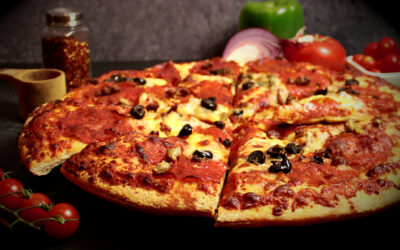Running a restaurant chain can be very rewarding, but in order to guarantee you’ll be in business for the long haul, it is important to keep food and labor costs low. From developing supplier relationships to using pre-made foods such as frozen bread dough, to cross-training your staff, here are some great ideas for managing a restaurant to the best financial success.
1. Work with Your Suppliers
One thing that is going to help you keep costs down is keeping up with food price comparisons. Check out the prices offered by your suppliers’ competitors, and if you’ve developed good relationships with supplying companies they may be willing to match competitor prices. It doesn’t hurt to ask. You may also be able to arrange to buy your ingredients in bulk at bulk order pricing. If you have a small kitchen or are low on storage space, try spreading your order out into multiple deliveries over time. This will also ensure freshness and cut down on wasted food.
2. Calculate Food Costs, Stick to Budget
Creating and sticking to a budget is extremely important in any business. To manage an effective budget at your restaurant chain, you’ll need to calculate all of your food costs. Be sure to check your inventory regularly, so that you are aware at what rate your food is being used and sold, and how much in your order is being wasted. For example, if you notice many of the eggs are spoiling before being used, consider altering your regular food order. You may even want to switch over to some pre-made products that will allow you to order fewer raw ingredients.
3. Pre-made Products
One way to ensure you’ll cut down on both food and labor costs is by using pre-made products in your restaurant. There are a lot of benefits to switching from making everything from scratch and ordering all of your raw ingredients in bulk to utilizing pre-made products such as frozen pizza dough, ready-to-bake sweets, ready-made bread dough, and prepared muffin or donut batters. Your kitchen will save hours in prep work, you should be able to cut down on staff required, and it’ll free up space in your fridges and pantries.
Frozen doughs and ready-to-use products will allow you to better budget for your restaurant. It’ll be easier to know what your costs are going to be ahead of time. Pre-made products produce less food waste as they allow you to use just as much as you need, when you need it, which will also decrease your operating costs. Many frozen and pre-prepared foods last for months, allowing for better flexibility when dealing with cost fluctuations and inflation. Just be sure that whatever pre-made foods you order are made from high-quality, all-natural ingredients. Your customers will be able to taste the difference!
4. Prevent Food Waste
We’ve mentioned how decreasing food waste can help save money on your restaurant’s food costs. Besides ordering in bulk from your suppliers and utilizing pre-made products, you may also cut down on food waste by offering a limited menu. This will decrease the amount of ingredients you’ll need to store in your kitchen.
One idea is to offer rotating options. For example, starting with your already cost-effective frozen pizza dough, switch up toppings with the change of seasons and create signature specialties. Be sure to keep in mind fluctuations in food prices and the seasonality of ingredients.
Taking this a step further, start to offer daily specials, using up ingredients that have been on your shelves for a while or food you’re able to purchase at discounted rates. Keeping an eye on your restaurant’s food waste can have a significant impact on your bottom line.
5. Communicate with Your Staff
When you’ve taken the time to hire and train staff members who care about your restaurant, they can really be helpful in reducing costs and ensuring your business sticks to a budget. Communicate with your staff about the price of food, and how they can best cut down on food waste during preparation, assist with inventory, and make decisions about daily or seasonal specials.
6. Fully Utilize Staff with Cross-Training
Cross-training staff members will help you get more done with fewer employees. If you’re already cutting down on prep time by introducing pre-made products, your staff will have more time to learn new skills. Make sure to fully utilize your staff in this way, as this will ensure a more efficient team that will require less supervision in the kitchen. This growth and trust will benefit your employees, as well as your bottom line.
7. Technology
Making investments in new technology can really help cut down labor costs in your restaurant chain. Look at incorporating features such as Automatic Billing, Online Ordering, and Online Table Reservations. These systems can greatly reduce the need for human labor, lowering your costs.
You should also stay up to date, and consider taking advantage of advances in cooking equipment. Replacing inefficient equipment with high-tech alternatives such as combi-ovens, automatic food mixers, accelerated cooking countertop ovens, and programmable fryers can cut down on cooking time, and as they say, time is money. Also, be aware that utilizing pre-made products, such as frozen bread dough, will cut down on the size and complexity of the kitchen equipment necessary.
While calculating food and labor investments and focusing on ways to reduce your restaurant chain’s operating costs may seem like a lot of work, following these tips will help ensure the ongoing financial well-being of your business.



